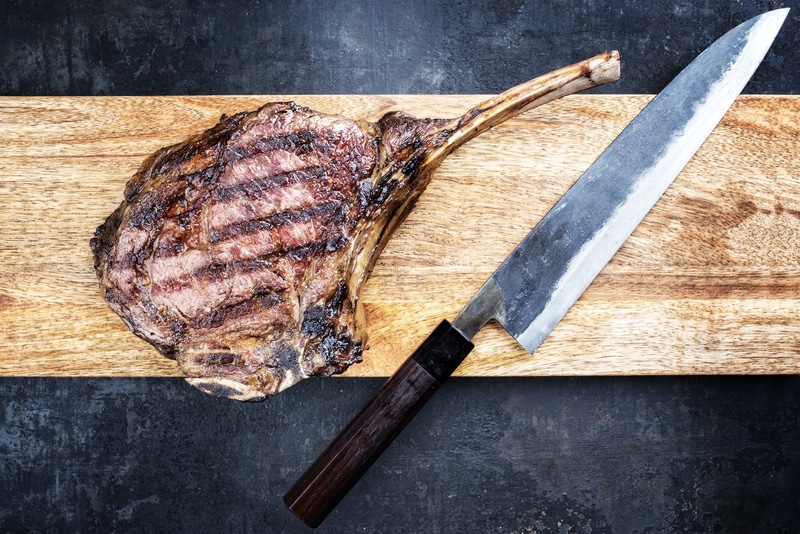
The Japanese knives are the most popular type of knives, particularly when it comes down to sharpness and quality. This is because these knives are made from hard steel, which makes them able to hold the edge for a long time period. However, Japanese knives tend to be brittle and are prone to chipping. To be honest, a chipped Japanese knife hurts because the knives are extremely expensive. Fortunately, the chipped knives can be fixed, and we are here to share the details!
How To Fix Chipped Japanese Knife?
There are various knife maintenance services available, which can be extremely expensive, but the cost usually depends on the severity of the chip. However, there is a DIY process that we will share with you. When it comes down to the Japanese knives, need special care, and many people don’t focus on maintenance, resulting in misuse of the knives, hence the chipping.
In the majority of cases, it is associated with the manufacturing issues, but it’s not the case – it’s related to the incorrect utilization. Japanese steel boasts a special chemical composition that allows higher standards of hardness as compared to other types of steel. To illustrate, the Japanese steel can be easily hardened over 60-HRC, which results in a sharper edge and better edge handling.
The Japanese knife is lighter and thinner and is sharper as compared to western knives. Now that you have sufficient information on the knives, it’s time to focus on chipping. This is because if the chipping is minor, it will be easier to fix. So, let’s see what can be done about chipping.
Fixing The Chipping
The most optimal way of removing chipping is to use a whetstone but using it requires practice. In simpler words, you need to be experienced at sharpening the knives before you start repairing them. This is because you need to know the right angles and have sufficient muscle memory. To fix the Japanese knife’s chipping, follow the instructions mentioned below;
- To begin with, you need to determine the severity of the chipping because it will determine the approach. In particular, you have to consider the stone’s grit and angle’s steepness with which you have to start the repair process
- The second step is to choose the grit of the whetstone, as it depends on the depth of the chip. For instance, if your knife has a minor chip, you can opt for a 600-grit stone because it’s an aggressive one as compared to regular sharpening sessions. In case the chip is medium-sized, you can use a 400-grit because it removes the material much faster and use a 25-degrees to 30-degrees angle. Lastly, if the chipping is deep, you need to opt for 200-grit or 120-grit stone because it promises better material removal. As far as the angle is concerned, choose a 45-degrees angle for a deeper chip
- When you identify the suitable grit and angle, you have to start gritting the chip. As you grit, the material will be removed, and the chip will be removed. However, you should move up to higher gritted stones to refine the edge as it can directly influence the strength and cutting power of the knife
- Once the gritting is done, you need to polish the edge with the help of a finishing stone. For the most part, the finishing stone has over 6000-grit, which helps with the finishing of the knife’s blade
How To Prevent The Chipping In Japanese Knives?
It is important to understand the reasons behind the chipping of Japanese knives to prevent the chipping. So, in the section below, we are sharing the reasons behind chipping, such as;
- The knives get chipped when you drop them on the hard surface, particular the granite countertops, concrete floors, tiled floors, and other hard surfaces
- The second common reason is using the knife to chop on hard surfaces, such as hardwood blocks, glass, and granite surfaces
- If you use the Japanese knife for preparing poultry and meat, cutting into bones can result in chipping because the bones can be extremely brittle
- If you use the knife for cutting into avocados and olives and thrust the knife into the pits, it will result in chipping
- Using the Japanese knife for cutting the frozen food also leads to chipping, so make sure food is defrosted and thawed